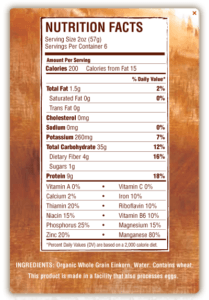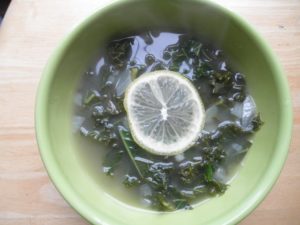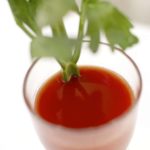 I recently received some free samples of a new brand of whole grain pasta, with a request to review the product. Having read through the promotional literature, exchanged emails with the company’s nutrition scientists, and cooked some up to taste, here’s my take.
I recently received some free samples of a new brand of whole grain pasta, with a request to review the product. Having read through the promotional literature, exchanged emails with the company’s nutrition scientists, and cooked some up to taste, here’s my take.
At a Glance
Jovial einkorn pasta is a 100% organic whole grain pasta produced in Italy.It comes in a variety of shapes (spaghetti, penne, etc.) and is nut-brown in color. Here’s the Nutrition Facts label for einkorn spaghetti:

The Company Line
According to the company, einkorn was the first domesticated species of wheat but was eventually replaced by other hybrids that produced higher yields. This “purest, most ancient species of wheat” is promoted as being lower in starch and higher in protein and fiber than regular wheat. It’s also said to have higher levels of thiamin, lutein, vitamin E, and many other nutrients.
The Reality Check
Continue reading “Product Review: Einkorn Pasta” >
 Q. I am a healthy, active person trying to maintain my weight. About once or twice a week I will have a nice dessert at my favorite bakery, staying within my allotted calories for the day. My question is: though I’m keeping calories down, is it still healthy?
Q. I am a healthy, active person trying to maintain my weight. About once or twice a week I will have a nice dessert at my favorite bakery, staying within my allotted calories for the day. My question is: though I’m keeping calories down, is it still healthy?
 I recently received some free samples of a new brand of whole grain pasta, with a request to review the product. Having read through the promotional literature, exchanged emails with the company’s nutrition scientists, and cooked some up to taste, here’s my take.
I recently received some free samples of a new brand of whole grain pasta, with a request to review the product. Having read through the promotional literature, exchanged emails with the company’s nutrition scientists, and cooked some up to taste, here’s my take.
 Kale Soup with Rice and Lemon Makes 4 servings The bright touch of lemon in this soup is like a little ray of sunshine on a winter’s day. The soup also manages to be hearty without weighing you down. Unlike most soups, which taste better the next day, this one is really best the day it’s made.
Kale Soup with Rice and Lemon Makes 4 servings The bright touch of lemon in this soup is like a little ray of sunshine on a winter’s day. The soup also manages to be hearty without weighing you down. Unlike most soups, which taste better the next day, this one is really best the day it’s made.
 If losing weight is one of your New Year’s resolutions, sooner or later you’ll probably find your resolve tested by an overwhelming desire for something really naughty. Hopefully, you’ll reach for a diet-friendly snack instead. But your chances of heading off dietary disaster will be higher if you choose an alternative that is a good match for your particular craving.
If losing weight is one of your New Year’s resolutions, sooner or later you’ll probably find your resolve tested by an overwhelming desire for something really naughty. Hopefully, you’ll reach for a diet-friendly snack instead. But your chances of heading off dietary disaster will be higher if you choose an alternative that is a good match for your particular craving. You’ll find lots of articles in the popular press about the value of anti-inflammatory diets. But many of them perpetuate certain myths about food and inflammation–in particular, that red meat is inflammatory and chicken is anti-inflammatory. I think that’s because many people simply assume that all the foods that we’re used to thinking of as “healthy” are anti-inflammatory and foods that we have been trained to view as “unhealthy” are inflammatory. In reality, the research on foods and inflammation challenges some of these assumptions.
You’ll find lots of articles in the popular press about the value of anti-inflammatory diets. But many of them perpetuate certain myths about food and inflammation–in particular, that red meat is inflammatory and chicken is anti-inflammatory. I think that’s because many people simply assume that all the foods that we’re used to thinking of as “healthy” are anti-inflammatory and foods that we have been trained to view as “unhealthy” are inflammatory. In reality, the research on foods and inflammation challenges some of these assumptions.